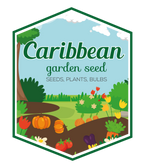
Bitter Gourd SEED - Long ,Bitter Melon
FAST & FREE SHIPPING
Over 90% of our orders are processed and ship out by next business day.
We are currently processing and shipping most orders within 1-3 business days. (backorders not included) Due to high demand during the peak months of January to May, orders may require additional time for packaging /shipment.
Free shipping for orders over $54.95. Excludes live plants, fresh products And Stackable Black Plastic Nursery Crate
Shipping and handling charges will cover outbound freight and packaging materials. Fees are applicable to all orders, based on total order value pre-tax. Expedited services can be selected at Checkout with extra fees.
- Free shipping to lower 48 states on orders $54.95+
- (Most Items), excluding live plants, plant bulbs, and black plastic nursery crate.
- Safe Seed Pledge
- Satisfaction Guaranteed
- Select your desired size and/or color from the available options.
This Japanese variety of the Oriental bitter gourd has a heavily warted, green skin and produces the best flavor when harvested young, at 10-13 inches. Its crisp and tender fruits are the result of being open-pollinated.The climbing vine can reach 12' and has yellow flowers. Bitter gourd prefers a warm climate and some humidity. Bitter gourd is also called bitter melon, karalla and balsam pear.
Warm season annual
Maturity: Approx. 60-70 days
Planting season: Late spring to early summer.
Cultivation: Sow seeds in well-drained soil after last frost for better germination. Consider pre-sprouting indoors and keep soil moist. Train to climb for air circulation and easier harvest. Low soil temperatures may reduce germination.
Harvesting India Bitter Gourd
Harvest this particular type when it reaches a length of 4 to 8 inches. Ensure that the bitter gourds are picked while still firm and before they fully ripen on the plant. Overmaturation occurs rapidly once the gourds begin to ripen.
Culinary Tips
This type of gourd can be cooked by removing seeds and white flesh. It is commonly used in Asian cuisine, often paired with potatoes and yogurt to balance its bitterness. Young shoots and leaves should be boiled before cooking. It can also be served in soups, stuffed dishes, and stir-fries. Recommended by the American Diabetic Association.
HOW TO GROW GUIDE
LET OUR CUSTOMER SPEAK FOR US

![[Seeds] - Caribbeangardenseed](http://caribbeangardenseed.com/cdn/shop/files/gift-card-gift-card-1_1024x1024_dfa857db-9150-4315-a362-7f0bb3fb9c47_60x28.png?v=1722895789)







